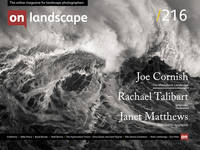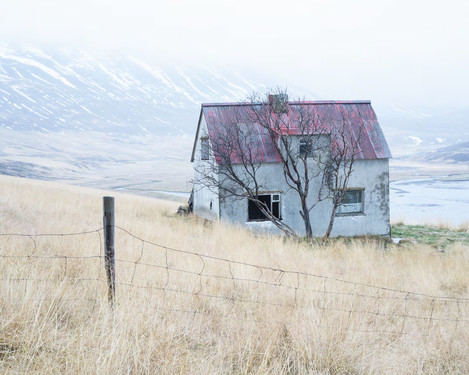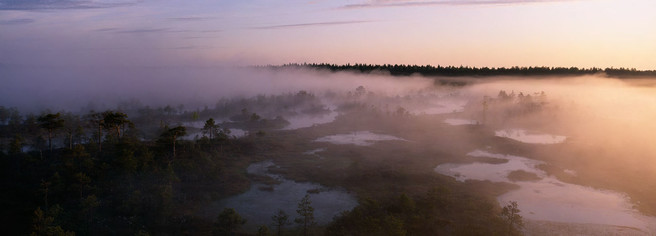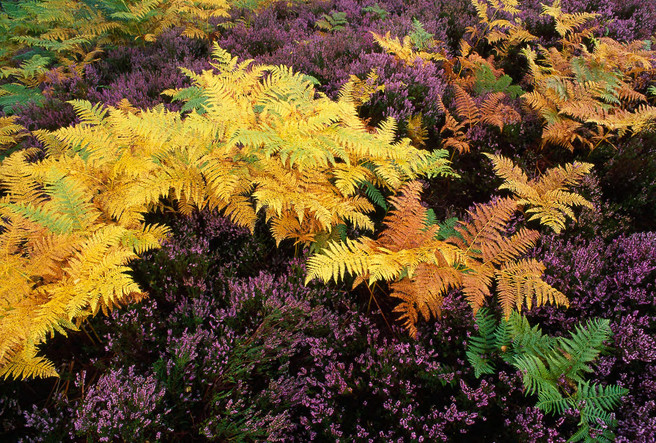Thoughts on 30 Years of Photography

Niall Benvie
Niall Benvie has been a professional photographer, writer, guide and designer for 25 years and with his wife, Charlotte, runs Food and Photography Retreats Ltd.
foodandphotographyretreats.com

Tim Parkin
Tim Parkin is a British landscape photographer, writer, and editor best known as the co-founder of On Landscape magazine, where he explores the art and practice of photographing the natural world. His work is thoughtful and carefully crafted, often focusing on subtle details and quiet moments in the landscape rather than dramatic vistas. Alongside his photography and writing, he co-founded the Natural Landscape Photography Awards, serves as a judge for other international competitions. Through all these projects, Parkin has become a respected and influential voice in contemporary landscape photography.
I recently chatted with Niall Benvie just as he was finishing an e-book documenting his journey through photography through anecdotes, thoughts and photographs. I asked if it would be possible to ask him a few questions about the project and his experience as a committed environmental photographer and writer. A big thanks for the opportunity and I hope his lucky streak continues!
Thanks for letting us take a look at your Retrospective book Niall. You mention in your introduction that success isn’t guaranteed and you ascribe your continuance in your career to an ongoing lucky streak. Do you think you make your own luck or is there an element of it that is outside your control and if the cards had landed differently you might not be looking back on 30 years?
Luck. We’ve probably both come across lazy photographers who have prospered and hardworking ones who haven’t. I imagine there are a whole number of factors that lead to this - personality; the complexity of the work; birthplace etc. etc. In my case, good things have happened just at the right time often enough to make me think I’ve been lucky. And the older I get, the more I understand how little control I have.
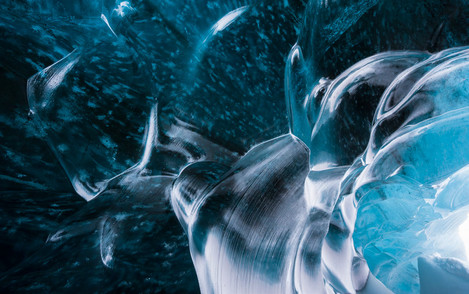
You mention that many photographers get hung up on style and you personally have made some quite dramatic stylistic course changes and not suffered too much from it. Could you expand a little on what you think “style” really is?
Style is something endemic rather than acquired or cultivated. It emerges once you’ve worked through all the external influences that inform your work as you’re making your way. Style informs how you approach different subjects - whether your intention is to tell a story or simply to make an expressive image - and changes in appearance accordingly. It’s the body on which different coats - techniques and looks - are worn depending on the subject matter and intention of the photographer, but the coats themselves are not the style. Put more simply, style is your subject framed by your world view. It’s as simple as that; -)
You’ve long had a connection with the written word to go with your images. Do you think that has helped you develop your own personal approach to photography?
I sometimes use words as part of an image because I can’t trust the viewer to “get” the message of the picture without them. It’s not that I’m necessarily a bad photographer, just that most people don’t receive a visual education to allow them even to entertain the possibility that the picture might be about something rather than simply of something. People, generally, don’t read pictures: they look at the surface appearance of them. I’m not interested in mincing around hoping that a sensitive viewer will see what I’m trying to say in a photograph. It’s much better if I simply make some words part of the image to clarify what it’s all about.
Can you tell us a little more about the International League of Conservation Photographers and the Wild Wonders of Europe that you helped found?
International League of Conservation Photographers: I was invited by Cristina Mittermeier, who founded the not-for-profit, to speak at the inaugural conference in Anchorage in 2005 and became a founding fellow. The organisation was conceived as a way to help scientists and conservationists access top quality communications materials and partner with professionals who could help get their stories out to a wider audience. Successful campaigning photography (e.g., by Subhankar Banerjee, Middleton and Liittschwager and Ketchum) in the US gave us some hope. In reality, buy-in by our natural partners in Europe was negligible and I resigned my Fellowship as the organisation’s focus shifted.
Wild Wonders of Europe: Staffan Widstrand and I sailed down the Kennai Fjord on the last day of that conference and shared ideas we’d had independently about a big project on European wildlife. Once home, we recruited others to the team including Rosamund Kidman Cox (formerly BBC Wildlife); Florian Moellers (GDT) and Pete Cairns and got the ball rolling. The objective: to show 740 million Europeans the natural crown jewels of their continent through the work of dozens of the best nature photographers working in Europe. With a budget of around €1m, early efforts focused on fundraising led by Staffan. Things were going well until the financial crash hit. It soon became apparent that many partners wouldn’t commit until after work was produced. So, the photographers went out, did the work and, incredibly, were paid. I could manage to work only so long without a management wage so left the very capable team to it. Incredibly and, it has to be said, largely due to the force of Staffan’s personality, the project came to fruition, with a large touring outdoor exhibition that appeared in several capital cities in Europe and Russia seen by millions and several books.
The book makes sobering reading post-financial crash. However, your work ethic and pragmatic approach seems to have made a success of things. Do you see much hope in general for those who dream of being a professional nature photographer?
I wonder if things had been easier if I would have worked so hard. By nature, I’m an “escalator runner” rather than “rider” (tell me the clocks are going back and I’ll get up an hour earlier than usual so I can have a two-hour advantage...) but after years of doing this, it wears a bit thin. I still do this though because I have ideas I am desperate to execute and expect to have other new ones in future too.
It’s very easy to become a professional nature photographer; the real challenge is to remain one year after year. You need to figure out if what you’re willing to sacrifice at 22 is the same as you’re willing to sacrifice at 40. Or 60. The shine of any profession in which sacrifice is an integral part wears off pretty quickly for most people. You really, really need to make stuff and to have a connection into the ether where ideas come from. I see depressingly few young photographers with that, perhaps because fewer and fewer young people have a meaningful, unmediated experience of the natural world. Please, prove me wrong!
Book details
You can buy the ebook at https://niallbenvie.selz.com/item/retrospective-thirty-years-of-photography

